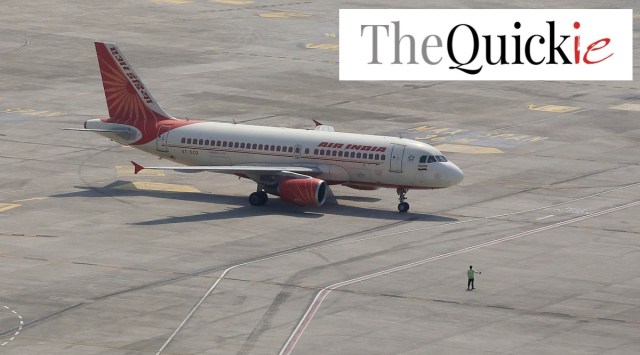Air India about to order 500 jets: Why is this important?
This Air India deal has the potential to rank among the biggest by a single airline in terms of volume— it could easily top $100 billion at list prices. We explain more.
 Air India seems to be in the mood for a bigger share of regional international traffic and the domestic market, setting up a battle with rival IndiGo in both spaces. (Express file photo by Amit Chakravarty)
Air India seems to be in the mood for a bigger share of regional international traffic and the domestic market, setting up a battle with rival IndiGo in both spaces. (Express file photo by Amit Chakravarty) Air India is close to placing a massive order of around 500 jetliners worth tens of billions of dollars. These 500 new planes are reportedly going to come from both Airbus and Boeing, as the airline moves towards a large-scale and ambitious revival under the Tata Group conglomerate, which acquired it in January this year. The deal is reportedly being finalised now. News agency Reuters quoted anonymous sources saying that the orders include “as many as 400 narrow-body jets and 100 or more wide-bodies including Airbus A350s and Boeing 787s and 777s”.
None of the parties involved— Airbus, Boeing, and Tata Group— have commented on these developments as of now.
Why is this a big deal?
This deal has the potential to rank among the biggest by a single airline in terms of volume— it could easily top $100 billion at list prices, including options. It could even overshadow an American Airlines order for 460 Airbus and Boeing jets, more than a decade ago.
While the Tata Group won’t walk away without a few discounts, the deal would definitely be worth tens of billions of dollars and cap a volatile year in the industry.
Also, reports of this potential order come only a few weeks after Tata’s announcement of a merger of Air India and Vistara, to create a bigger full-service carrier and strengthen its presence in the skies— both domestic and international. This was a joint-venture with Singapore Airlines (SIA).
The Vistara deal gave Tata a fleet of 218 aircraft, making Air India the country’s largest international carrier. It still comes behind IndiGo domestically though, which as of now continues as the industry leader.
Why was it a volatile year?
Even though people have started flying again, the aviation industry has been facing ever-increasing industrial and environmental pressures.
Okay. Tell me more about the Vistara deal
SIA and Tata Sons announced on November 29 that they have agreed to merge Air India and Vistara, with SIA getting a 25.1 per cent stake in the merged entity at an investment of Rs 2,058.5 crore ($250 million) in Air India as part of the transaction.
This 25.1 per cent stake will be in an enlarged Air India group – it will have Air India, Vistara, AirAsia India and Air India Express – and the merger of all airlines is targeted for completion by March 2024, subject to regulatory approvals. The group is already in the process of merging Air India Express and AirAsia India into one entity that will provide low-cost flight options.
What seems to be Tata Group’s strategy?
Looking at this new order of 500 jets, which will take at least a decade to be delivered, along with the earlier Vistara deal, it seems that Tata Group is carefully planning to win back a significant share of traffic flows to and from India, which are dominated by foreign carriers such as Emirates currently.
Along with this, Air India also seems to be in the mood for a bigger share of regional international traffic and the domestic market, setting up a battle with rival IndiGo in both spaces.
What impact would this deal have in a larger context?
India is the world’s fastest-growing airline market— 500 new jets would both replace and expand fleets, and serve a consumer base that continues to expand as more and more Indians look at flying as an affordable and convenient travel option.
Prime Minister Narendra Modi has often spoken of his government’s goal to make India a $5 trillion economy. This deal would contribute to that.
Any obstacles?
Of course. Experts have warned of various obstacles that stand in the way of Air India’s ambition of becoming a global leader again. These include frail domestic infrastructure, pilot shortages and the threat of tough competition with established Gulf and other carriers.
(With Reuters inputs)
- 0121 hours ago
- 0221 hours ago
- 0320 hours ago
- 0421 hours ago
- 0521 hours ago






































